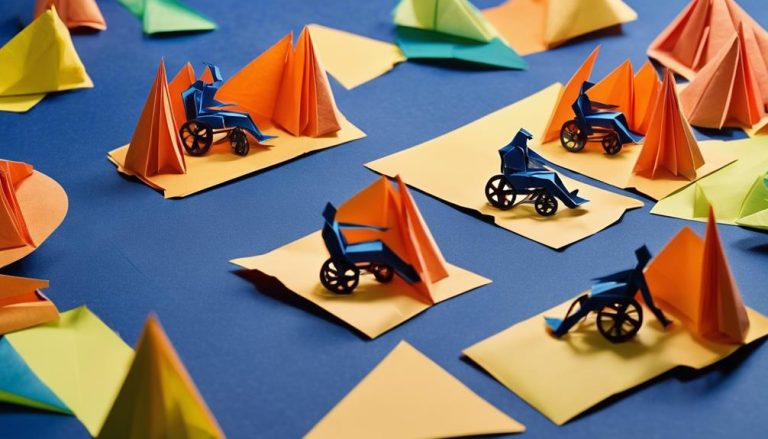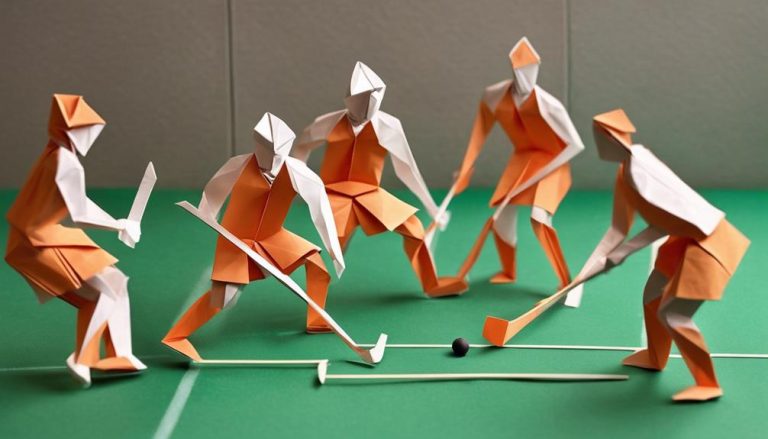General Rules of Roller Skiing
Did you know that roller skiing is not just a summer pastime? Safety is paramount when engaging in this sport, and knowing the general rules can make all the difference. From proper equipment usage to understanding road etiquette and group riding, there are key aspects to ponder. Whether you're a beginner or a seasoned roller skier, these guidelines will help elevate your experience. Stay tuned to learn more about essential rules that will enhance your roller skiing journey.
Equipment Safety
Make sure that all equipment, including helmets, wrist guards, and knee pads, is properly secured before starting your roller skiing session. Proper maintenance of your roller skiing gear is important for ensuring your safety and best performance. Before each session, inspect your equipment for any signs of wear and tear. Make sure that your helmets are not damaged and fit securely on your head. Wrist guards and knee pads should also be in good condition, with straps securely fastened to provide adequate protection.
Protective gear plays an important role in preventing injuries while roller skiing. Helmets are essential to protect your head in case of falls or collisions. Make sure your helmet fits properly and meets safety standards. Wrist guards are crucial for protecting your wrists from fractures or sprains. Check that they are the right size and provide sufficient support. Knee pads help prevent knee injuries and should be worn snugly to avoid slipping during use.
Proper maintenance of your protective gear is necessary to ensure its effectiveness. Clean your equipment regularly to remove dirt and sweat buildup that can affect its performance. Check for any signs of damage and replace any worn-out parts promptly. By taking care of your gear and ensuring it is properly secured before each roller skiing session, you can enjoy a safer and more enjoyable experience on the trails.
Proper Technique
When roller skiing, proper technique is important for efficiency and safety. Focus on pole placement to maximize propulsion and maintain balance. Guarantee even weight distribution to prevent falls and optimize performance.
Pole Placement Importance
Efficient pole placement on roller skis is essential for maximizing propulsion and maintaining balance during the skiing motion. Proper form dictates that your poles should be planted at a slight angle behind you, allowing for a longer push and better transfer of power. This technique not only enhances your speed control but also minimizes the risk of losing balance while roller skiing. By ensuring that your poles are positioned correctly with each stroke, you can optimize your performance and reduce the chances of unnecessary falls. Practicing this aspect of roller skiing will not only improve your overall efficiency but also contribute to a more enjoyable and liberating skiing experience. Remember, proper pole placement is key to mastering the art of roller skiing.
Weight Distribution Balance
Proper weight distribution balance on roller skis is important for maintaining stability and optimizing propulsion efficiency. To achieve this, focus on core strength and body alignment to enhance control and power transfer. Engage your muscles effectively and pay attention to your foot position to guarantee proper weight distribution. Here are three key points to help you master weight distribution balance:
- Core Strength: Strengthen your core muscles to stabilize your body and maintain balance while roller skiing.
- Body Alignment: Keep your body aligned in a straight and forward position to distribute weight evenly on the skis.
- Muscle Engagement and Foot Position: Activate the right muscles and position your feet correctly to control weight distribution and improve overall performance.
Road Etiquette
Observing and adhering to designated lanes and traffic signals is essential for maintaining safety while roller skiing on the road. When it comes to passing protocol and trail sharing, it is vital to communicate effectively with other road users. Roller skiers should signal their intentions clearly, using hand gestures or verbal cues to indicate when they are about to pass or merge. This not only helps prevent accidents but also fosters a sense of respect and cooperation among all users of the road.
Regarding group dynamics, roller skiers should aim to maintain a single file formation when skiing in a group. This reduces the overall footprint on the road, making it easier for other vehicles to pass safely. Additionally, staying in a straight line helps improve visibility and coordination within the group. It is also important to be aware of your surroundings and adapt to the flow of traffic. This means being prepared to yield to oncoming vehicles or pedestrians when necessary.
Weather Considerations
In considering weather conditions for roller skiing, it is imperative to assess factors such as temperature, precipitation, and wind speed to guarantee peak performance and safety. To optimize your roller skiing experience, follow these guidelines:
- Layering Clothing: Dressing in layers is essential for adapting to changing weather conditions. Start with a moisture-wicking base layer to keep sweat away from your body. Add insulating layers for warmth, and finish with a windproof and waterproof outer shell to protect against precipitation. This versatile approach allows you to adjust your clothing as needed during your roller skiing session.
- Precipitation Planning: Keeping an eye on the weather forecast is vital for planning your roller skiing activities. Be prepared with appropriate rain gear if there is a chance of showers, or consider rescheduling your session if severe weather is expected. Roller skiing in wet conditions can be dangerous due to decreased traction and visibility, so always prioritize safety.
- Wind Conditions and Temperature Adjustments: Wind can significantly impact your roller skiing experience. Strong gusts can affect your balance and speed, so be cautious when skiing in windy conditions. Additionally, adjust your clothing layers and pace based on the wind chill factor to prevent discomfort or frostbite. Stay informed about wind speeds and temperatures to make informed decisions before heading out for your roller skiing adventure.
Trail Selection
When choosing a trail for roller skiing, you should consider the terrain carefully. Match your skill level with the difficulty of the trail to guarantee a safe and enjoyable experience. Always prioritize safety precautions to prevent accidents and injuries.
Terrain Considerations
Consider trail conditions carefully when selecting terrain for roller skiing to guarantee safety and peak performance.
- Uphill Challenges: Ascend gradually sloping terrains to build endurance and strength efficiently.
- Downhill Techniques: Practice controlled descents on smooth surfaces to enhance balance and agility.
- Variable Terrain: Challenge yourself with diverse landscapes to improve adaptability and overall roller skiing skills.
Skill Level Matching
Skill level matching on roller ski trails is important for optimizing training and performance outcomes. To establish you are training at the right intensity and skill level, commence with a thorough skill level assessment. Tailoring your training plans to match your current abilities will help you progress effectively. Utilize instructional videos and coaching techniques to improve your roller skiing skills gradually. Start with trails that align with your proficiency level to build confidence and prevent injuries. As you advance, gradually increase the difficulty of the trails to continuously challenge yourself. By matching your skill level with the appropriate roller ski trails, you can enhance your performance and develop your abilities efficiently.
Safety Precautions
To safeguard your safety while roller skiing, meticulously select trails that correspond to your skill level and proficiency to mitigate potential risks. When choosing a trail, consider the following:
- Terrain Type: Opt for trails with smooth surfaces and gradual inclines if you are a beginner to prevent accidents and falls.
- Traffic Density: Select trails with lower traffic volume to minimize the risk of collisions with other skiers, pedestrians, or vehicles.
- Distance and Duration: Start with shorter trails and gradually increase the distance as you gain more experience and confidence in your roller skiing abilities.
Group Riding Etiquette
When roller skiing in a group, maintaining proper etiquette is important for safety and efficiency. Group riding requires coordination and communication to guarantee everyone's well-being. Understanding communication signals and group dynamics is critical for a smooth and enjoyable roller skiing experience. Here are some key points to keep in mind:
| Etiquette Rule | Description |
|---|---|
| Communication Signals | Use clear hand signals to indicate stops, turns, or obstacles on the road to alert fellow skiers. |
| Maintain Group Formation | Stick to the agreed formation to prevent disruptions and guarantee a cohesive and efficient ride. |
| Respect Others' Space | Give ample room between skiers to avoid collisions and provide a safe distance for maneuvering. |
Following these etiquette rules fosters a sense of unity within the group and promotes a safer roller skiing environment. Effective communication signals help in moving through different terrains, while maintaining the group formation enhances the overall experience by reducing interruptions. Respecting each other's space not only prevents accidents but also shows consideration for your fellow skiers. By adhering to these guidelines, you contribute to a positive group dynamic and make the most out of your roller skiing sessions.
Emergency Preparedness
Maintaining proper emergency preparedness is paramount when roller skiing in a group to guarantee swift and effective response to unexpected situations. In the event of an emergency, being prepared can make all the difference in ensuring everyone's safety. Here are some key points to contemplate for emergency preparedness:
- First Aid Kit: Always carry a well-equipped first aid kit with essential items like bandages, antiseptic wipes, pain relievers, and any necessary personal medications. In case of injuries, immediate access to first aid supplies can prevent complications and aid in a speedy recovery.
- Communication Strategies: Establish clear communication protocols within your group before starting your roller skiing session. Make sure that everyone knows how to contact emergency services if needed and designate a meeting point in case the group gets separated. Effective communication can help coordinate efforts during emergencies and prevent confusion.
- Emergency Action Plan: Develop an emergency action plan with your group outlining steps to take in different scenarios such as injuries, getting lost, or encountering aggressive wildlife. Practice this plan periodically to make sure everyone is familiar with their roles and responsibilities during emergencies.
Skill Progression
Skill progression in roller skiing is an important aspect of training that focuses on enhancing technique and efficiency to optimize performance. To advance your roller skiing skills effectively, consider the following progression tips and training drills.
To begin, mastering the basic techniques is fundamental. Focus on perfecting your balance, weight transfer, and arm swing coordination. Once you feel comfortable with the basics, start incorporating more dynamic movements into your training. Engage in drills that challenge your agility, such as quick turns or obstacle courses, to improve your overall coordination and reflexes.
As you progress, it is vital to work on building strength and endurance specific to roller skiing. Include interval training in your regimen to enhance your cardiovascular capacity and muscular endurance. Uphill skiing drills are excellent for building strength and power in your lower body, essential for conquering challenging terrains.
Additionally, practicing different skiing styles like classic and skate will broaden your skill set and make you a more versatile skier. Experimenting with various techniques will not only keep your training exciting but also help you adapt to different conditions effectively.
Frequently Asked Questions
Can Roller Skis Be Used on Any Type of Surface, or Are There Specific Terrains They Should Be Used On?
You can use roller skis on various surfaces, but it's best to stick to smoother terrains for safety. Different terrains require different safety precautions, so always be mindful of your surroundings and choose wisely.
Are There Any Specific Maintenance Tips for Roller Skis to Ensure They Last Longer?
To make sure your roller skis last longer, proper maintenance is key. Regularly check for wear and tear, clean them after each use, and store them in a cool, dry place. These care practices lead to extended longevity and better performance.
How Often Should Roller Ski Bindings and Boots Be Checked for Wear and Tear?
To guarantee peak performance, check roller ski bindings and boots for wear regularly. Inspect for boot compatibility and make necessary binding adjustments. Proper roller ski maintenance and storage tips will prolong equipment lifespan, enhancing your skiing experience.
Are There Any Specific Exercises or Drills That Can Help Improve Balance and Stability on Roller Skis?
Like a tightrope walker, mastering balance drills and stability exercises on roller skis is key. Strengthen your core, improve coordination through targeted training. Enhance your skills and confidence with focused practice sessions.
Are There Any Recommended Stretches or Warm-Up Exercises to Prevent Injuries While Roller Skiing?
To prevent injuries while roller skiing, it's essential to engage in flexibility routines and perform pre-race warm-ups with proper stretching techniques. By incorporating these practices, you can enhance your performance and reduce the risk of potential harm.






